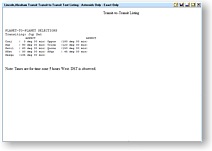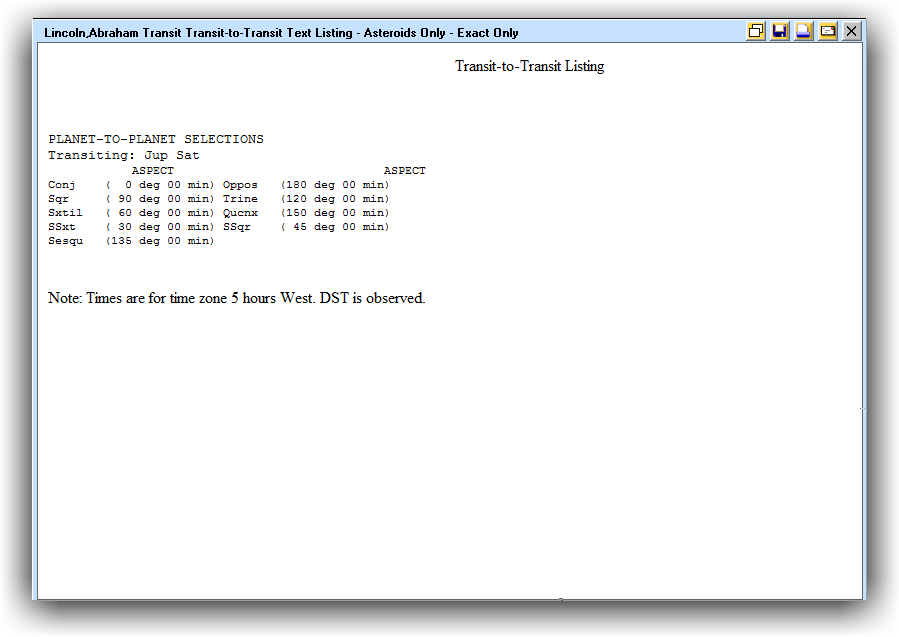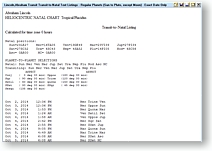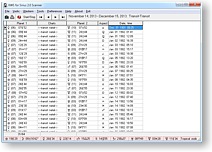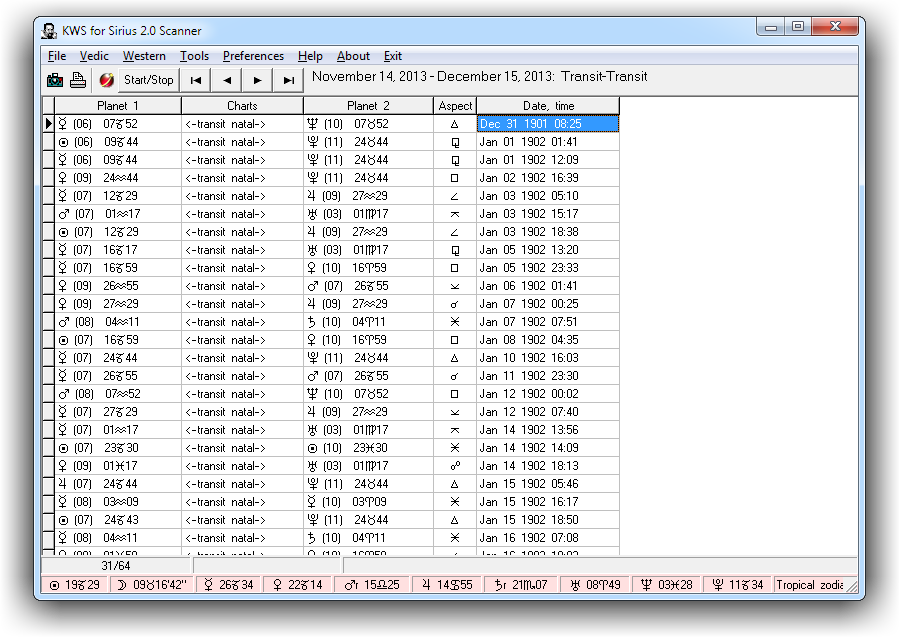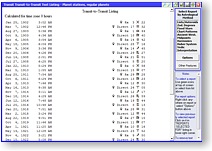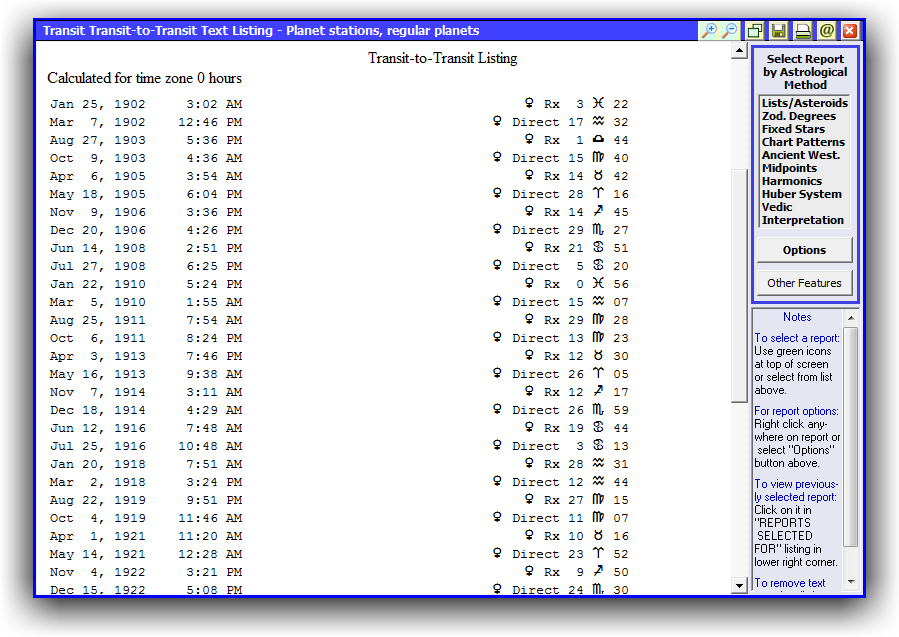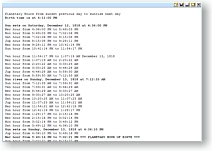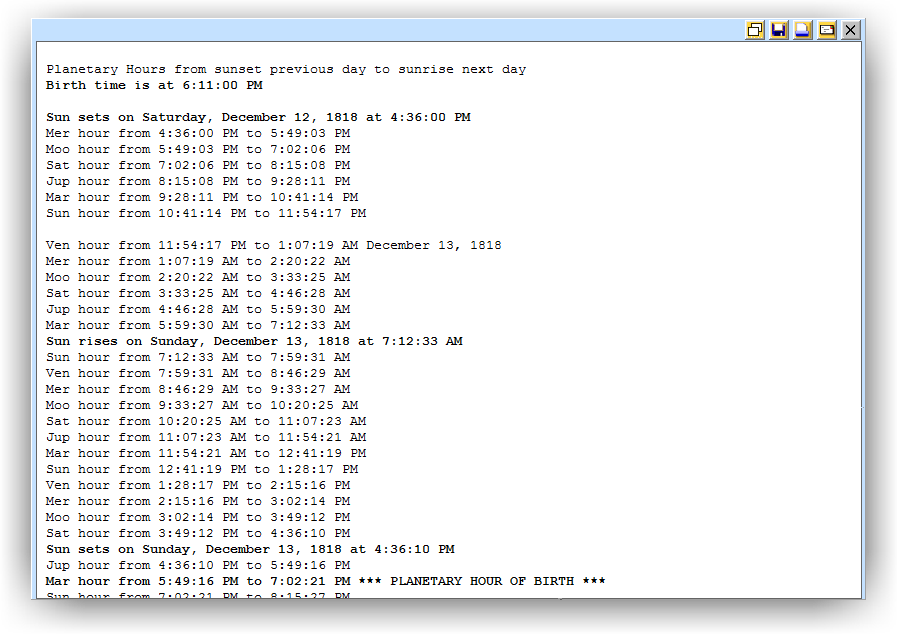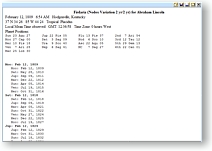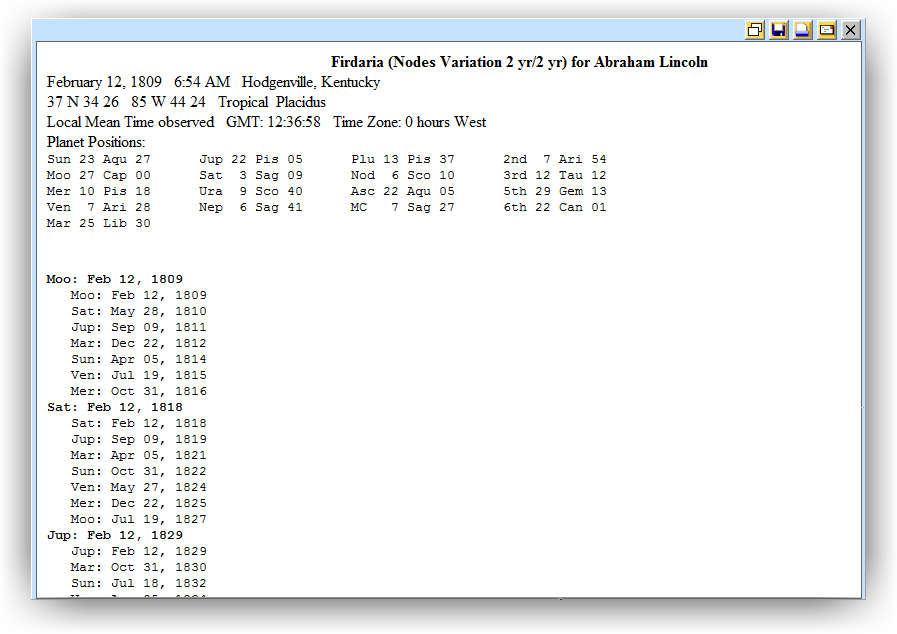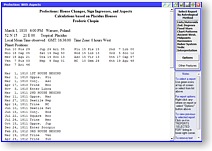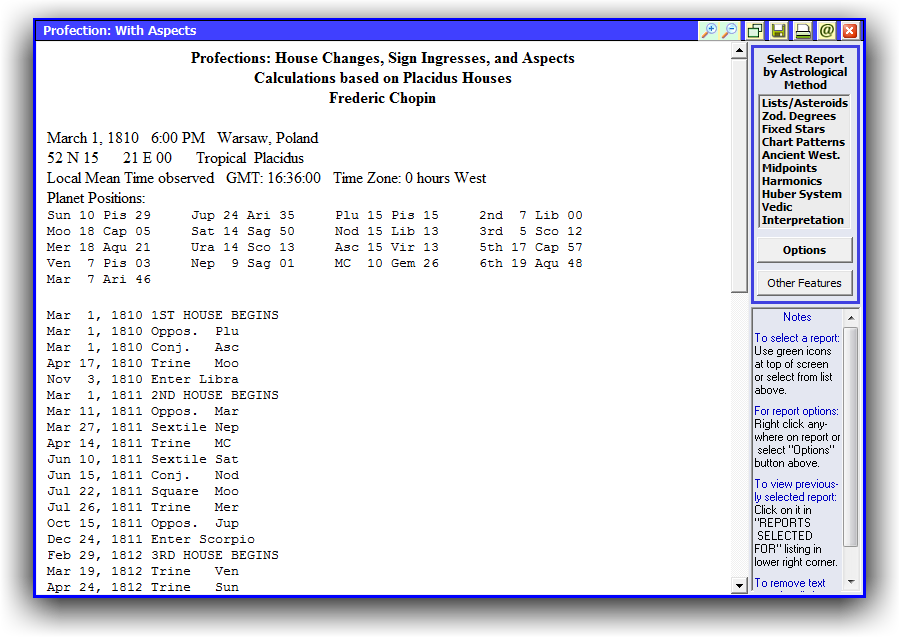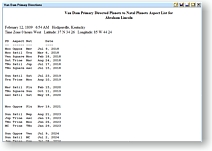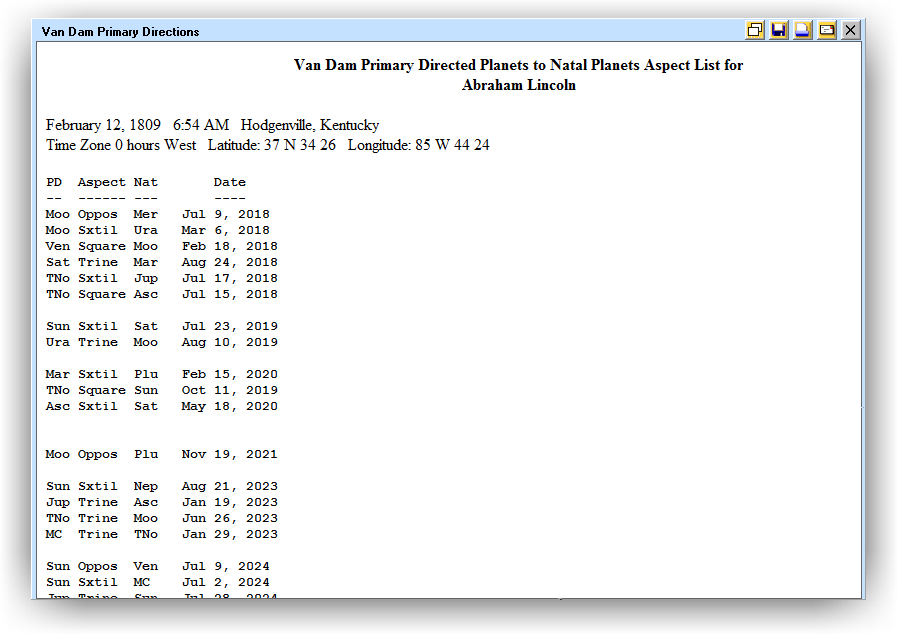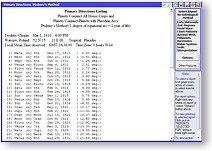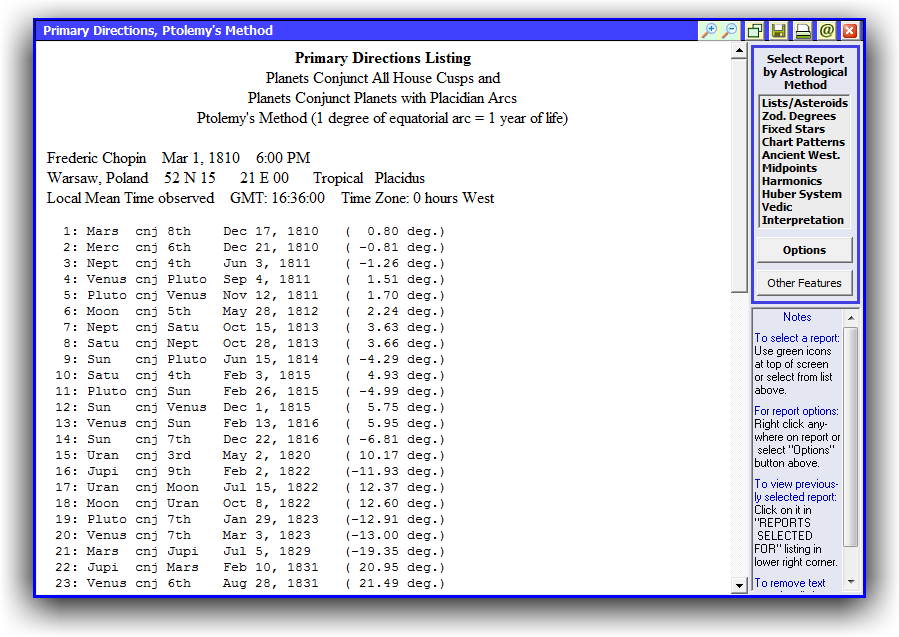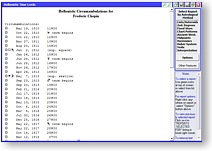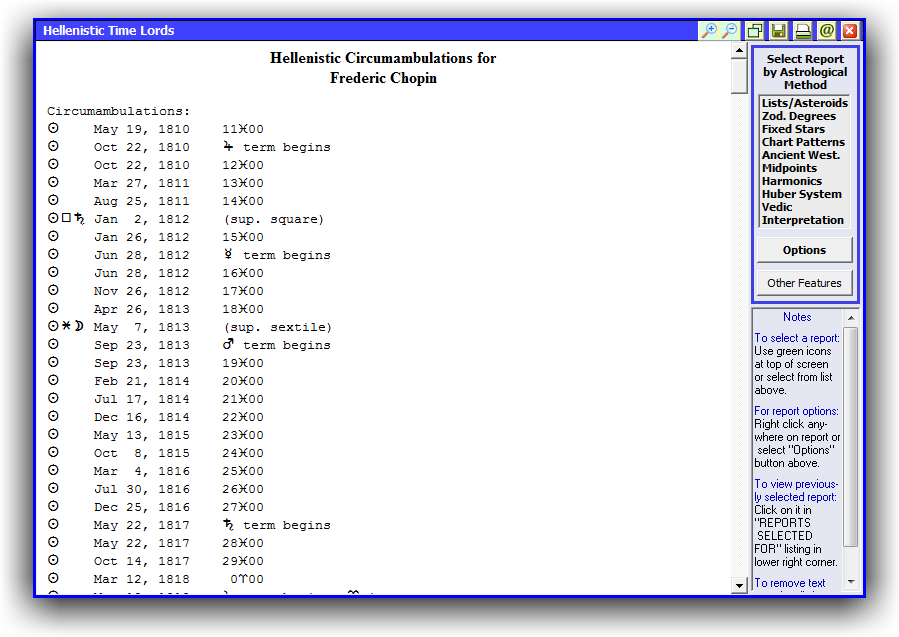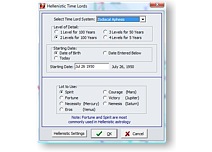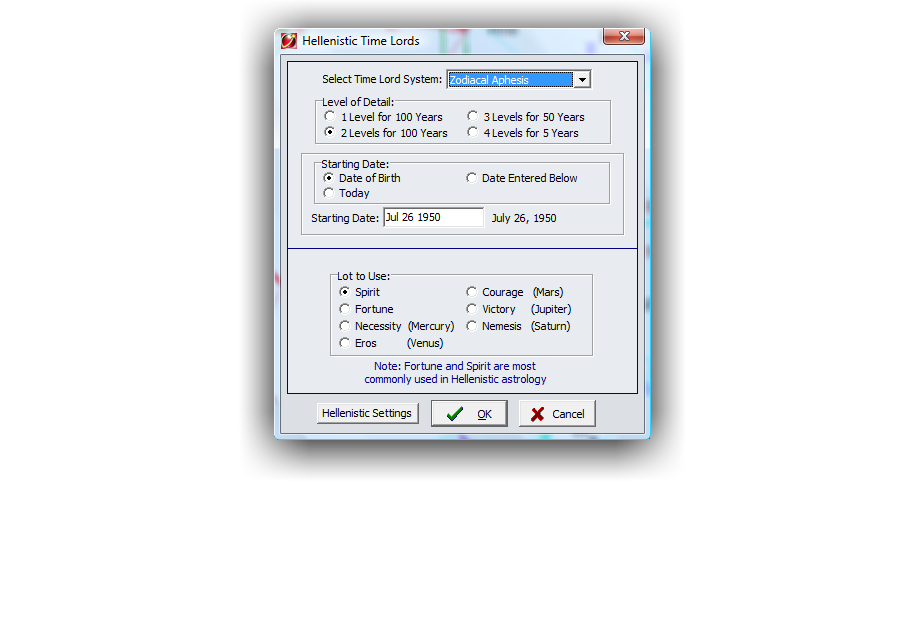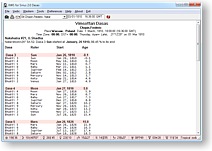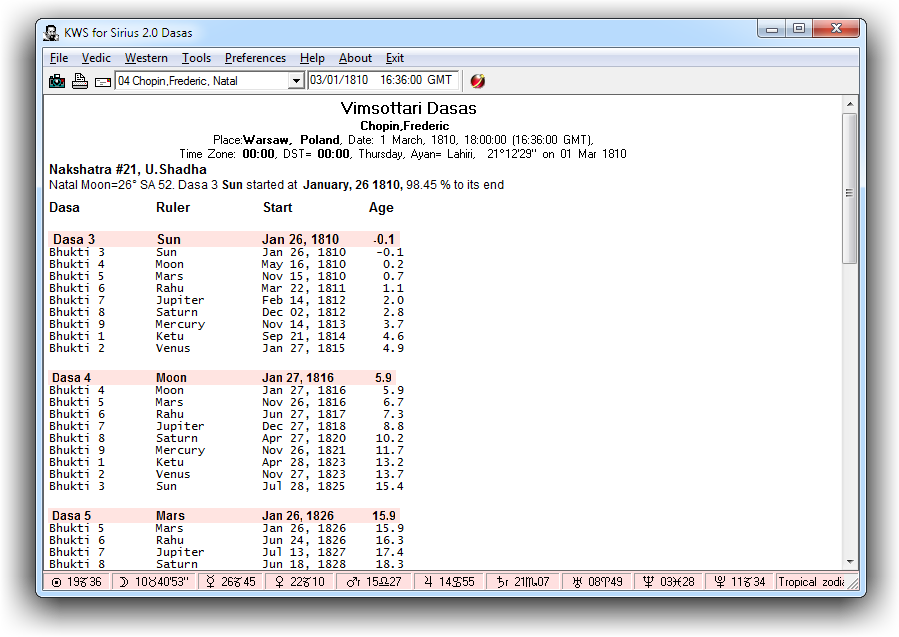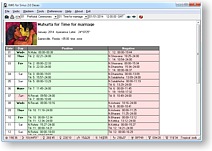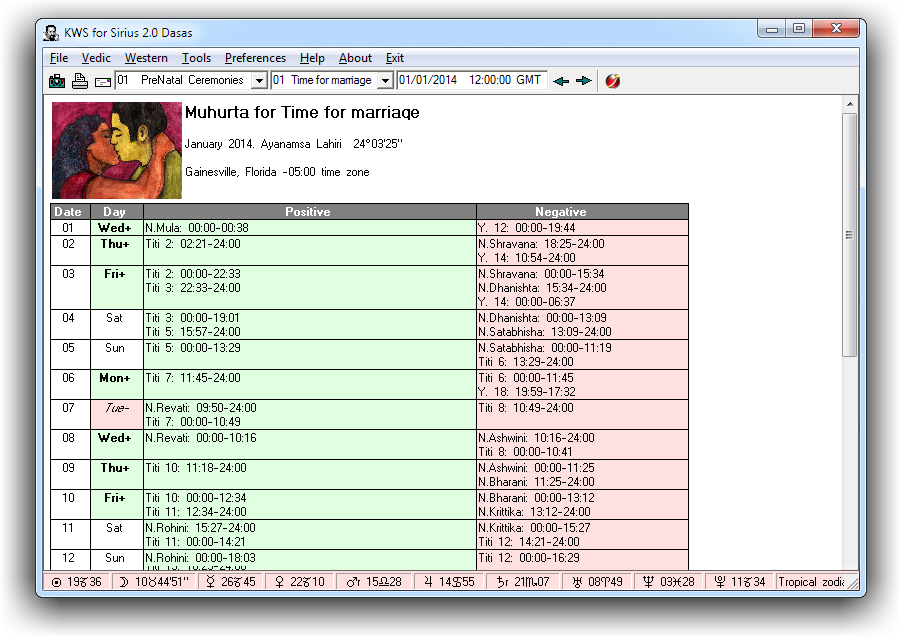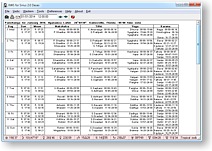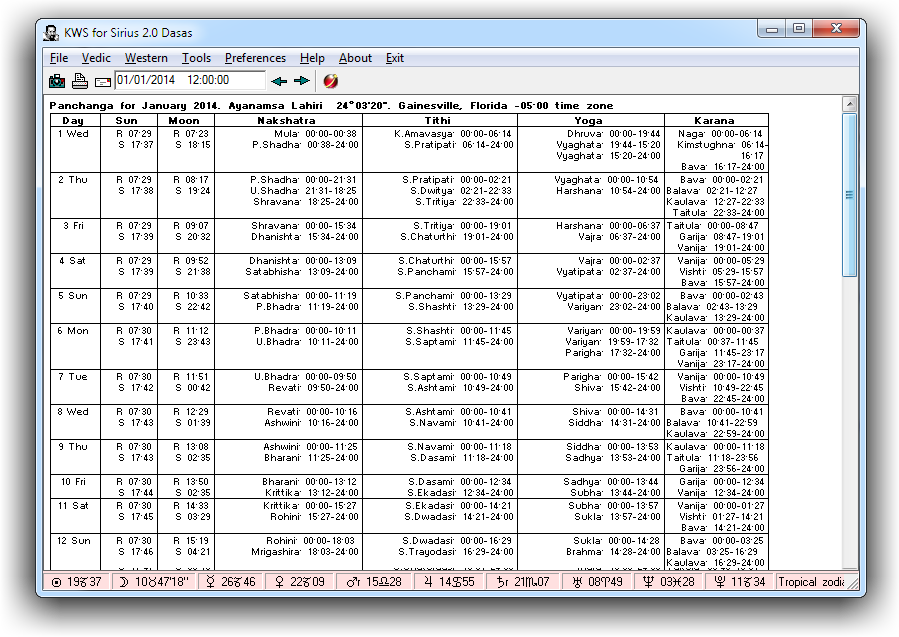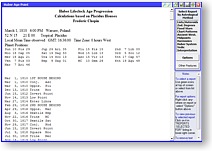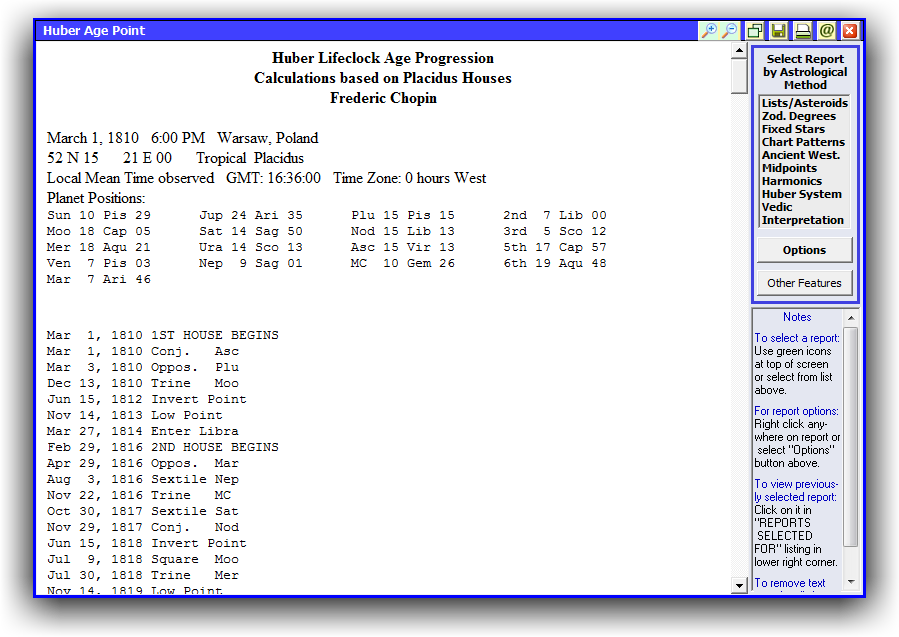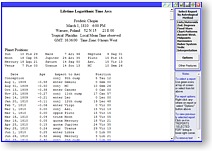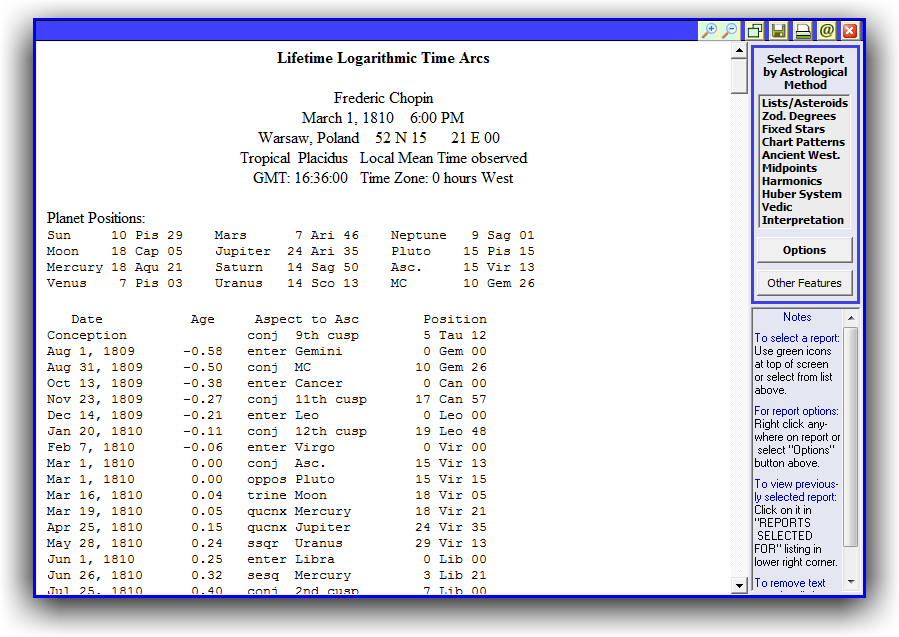 Windows 10 / 11 compatible!
Windows 10 / 11 compatible!
|
Below we describe the following kinds of forecast text listings that are available in Kepler:
As you can see, there are many kinds of forecast text listings available in Kepler. We will describe many of them, but there are so many variations of these listings that we will not describe all of them.
Aspect Lists
Although the Time Line Format is preferred by many astrologers for most forecasting, there are situations where a text listing of aspects is helpful, such as when viewing transits or progressions for a time period of many years. Also, different astrologers have different preferences and some astrologers do use text listings of aspects more often than other astrologers. Suppose, for example, that you are studying historical cycles and you are interested specifically in the times when Jupiter and Saturn are forming hard aspects in the first half of the 20th century. In the first image shown on the right is a listing of this information which was produced by selecting a transit-to-transit text listing and only the planets Jupiter and Saturn and only the conjunction, opposition, and square aspects. The second image shown on the right includes planet positions and the third one is in a table format. These are just a few examples of the kinds of transit-to-transit, transit-to-natal, progressed-to-natal, and progressed-to-progressed listings that are available. The reason why there is so much flexibility allowed in the transit and progressed text listings is because Kepler users have requested these features. Some astrologers and researchers in astrology prefer information to be provided in a particular way and we strive to provide as much flexibility as possible to meet the needs of different people.
Lunations, stations, ingresses, planetary hours, etc.
When analyzing trends in political astrology or other mundane affairs or for some reason an astrologer may wish to know when certain astronomical events occur, such as when planets are stationary over a period of time. Shown to the right is an image of times when Venus is stationary. This listing was produced by customizing the default listing by removing all planets except Venus. Another popular listing is the dates when transiting planets ingress into zodiac signs. A planetary hour table for a particular place is used by many astrologers. The listing is a handy reference so you know when the planetary hours change. Shown to the right is a very helpful listing for many astrologers; you can see both the planetary hour and the rising sign. When the ruler of the rising sign and the planetary hour are the same, the information is listed in blue. For example, we can see that at 12:15 PM Taurus starts to rise and the planetary hour is Venus from 12:15 PM until 12:26 PM when the planetary hour changes to Mars. Thus, for 11 minutes, from 12:15 to 12:26 PM, there is a "double Venus" effect. These times are identified in medieval classic works like the Picatrix as having an especially strong influence of a particular planet.
Medieval: Firdaria, Profections, Primary Directions, etc.
Firdaria and profections are two classical (medieval) astrological methods for forecasting. Primary directions were a very important predictive method used for over a thousand years. There is now a revival of interest in primary directions as well as other ancient astrological methods. Primary directions are rather complex. There are many variations of the calculations, such as the methods of Ptolemy, Cardan, Naibod, Placidus, and Kepler. There are also modern variations of the calculations by Rumen Kolev and David Cochrane. All of these variations in the way that the timing of primary direction aspects occur are available in Kepler as well as options to include conjunctions to intermediate cusps, planet-to-planet aspects using either the Placidian method or the Regiomontanus/Lilly method and you may choose only planet-to-planet conjunctions or the five Ptolemaic aspects. An especially interesting modern variation of primary directions are the methods of Wim Van Dam. Van Dam is a Dutch astrologer whose system of primary directions has been praised by Rob Hand and other astrologers as a well-founded idea. Van Dam generously provided us all of the technical information so that a comprehensive implementation of the Van Dam system is available in Kepler.
Hellenistic: Time Lords, etc.
Time Lords are one of the main forecasting methods in Hellenistic astrology. Kepler offers extensive and flexible time lord systems listings. You can select circumambulations, zodiacal aphesis, decennials, the 129 Year System, the Balbillus system, annual profections, and lunar monomoria. You can easily select the time period and many options such as the number of levels, the planet or lot to use as the basis, and other variations in the calculations. For circumambulations you can include the date of ingress into each degree and each term. Hellenistic astrologers have reported that they are very happy with the flexibility and elegant user interface.
Vedic: Dasas, Gochara, Muhurta, etc.
Many Vedic forecasting methods are available in Kepler. In addition to the most common dasa system, Vimsottari dasas, there are 9 other dasa systems: Ashtottari, Drigdasa, Kalachakra, Lagan Kendradi, Narayana, Narayana Shoola, Shoola, Sudasa, and Yogini. You can select the number of levels. Ashtakavarga tables and an ashtakavarga graph are available as well as a Gochara graph. The panchanga forecast tables are very nicely organized and are thorough. A huge number of muhurta tables can be produced and the muhurta tables include graphic images at the top of the report so you can send to clients, post on your website, or publish beautiful and unique muhurta tables. Of course, the technical accuracy is just as professional and carefully developed as the beauty of the reports. If you click on the images to the right, you will see the attention to detail that is given to each report. The inclusion of lots of technical detail in a nicely organized and clearly readable manner, the use of background colors, and the graphic image at the top of the muhurta tables are examples of how Kepler not only provides the information that you would like to have, but provides it in a very professional and beautiful manner. As usual, you can right-click on a report to quickly pull up the settings. For example, while viewing the dasas listing, you can right-click, change the kind of dasa, the number of levels, and any settings that are specific to that kind of dasa, click the OK button and see the new listing. We have also carefully compared and analyzed the results produced by Kepler with authoritative sources. The extreme effort that we put into ensuring that Kepler is technically accurate, flexible, easy-to-use are reasons why astrologers who work with Kepler are invariably impressed and delighted.
Other Modern Methods:
Huber Age Point, Logarithmic Time Arcs, etc. The Huber Age Point and Logarithmic Time Arcs are two examples of forecasting methods developed by modern astrologers. The Huber system was developed by Bruno and Louise Huber and Huber patterns, Huber wheels, and other details of the Huber system are available in Kepler. One part of the Huber system is the Age Point system of predicting. There is a fairly large number of followers of the Huber system and also astrologers who use some parts of the Huber system. Logarithmic time arcs were developed by astrologer Tad Mann. We received requests for Logarithmic Time Arcs from astrologers who use them because they find that they work. With the help of Tad Mann we ar able to include them in Kepler. |
